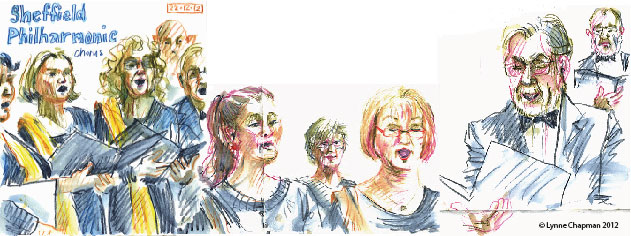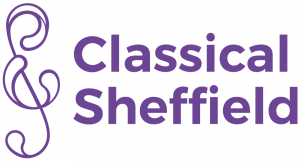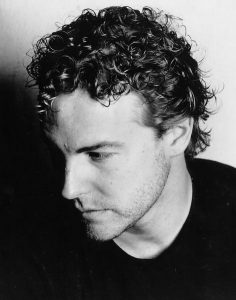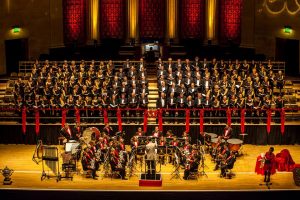Press release: 24 February 2011
So what do a Music Promoter turned Physiotherapist, an Independent Charity Consultant and a Project Manager with a professional interest in bus stations have in common? Answer; Thomas Mitchell, Ian Owers and Ambrose White will all be making their choral debuts with the Sheffield Philharmonic Chorus on the City Hall stage on Friday 25th February, singing Mozart’s famous (and fabulous) Requiem.
Roughly 160 people sing with the Chorus in each concert, but don’t let the numbers fool you. Officially amateurs, they are glad of every new member since a turnover of good voices helps to keep the standard high and everyone on their toes. With this in mind they recently ran a free six-week workshop for male voices in order to give confidence, support and a general helping hand to any chap who fancied joining the Chorus but did not quite feel they had what it took to sing with such a professional sounding and highly attuned bunch. Thomas Mitchell, 34 of Broomhall, and Ambrose White, 30 of Abbeydale, both attended.

“I heard about the Chorus from my friend Ambrose” said Thomas; Ambrose having signed up for the singing workshop. “Intrigued, and not keen to shirk a challenge, I joined him. The sessions proved to be an ideal platform to undress ones inadequacies of voice and receive feedback in a safe setting. Indeed, although it has been difficult to learn how to read music and express the rhythm of the written notes, I battled through the course, gained confidence and improved my technique”. He was delighted to pass the necessary audition and says that singing is “a fantastic stimulation; physically, mentally and expressively. There is a real thrill to be in the centre of the room when the cords are held to the Chorus Masters’ demand, and afterwards ones brain feels like it has been exercised in an incomparable way”. So, not bad for a cold and dark Tuesday evening in the bowels of the University Arts Tower then!
Thomas, a Physiotherapist, has just returned to Sheffield after a number of years away working in London and the South coast, and has recently bought the clinic of George Chia on Wilkinson Street in Broomhall. His job sees him working with top athletes such as the Great Britain Wheelchair Rugby team, members of the Lawn Tennis Association, British amateur boxers and has meant he has travelled too – most notably to Beijing for the Paralympics. But music has always been a great love. “As a child I played in wind bands then moved onto blues as a teenager”, he explained. “Spare time in my twenties was spent promoting music gigs, club nights and raves around Sheffield and I never really understood classical music. I had never even heard Mozart’s Requiemprior to my involvement with the Chorus” he laughed.

Ambrose White’s story is more of a ‘slow burn’. If asked ‘what made you decide to join a choir’, people give a variety of reasons but Ambrose’s was quite straight forward. “I sing because, although it took me sometime to realise, I am always singing”. Having sung in church and school choirs, it was nearly 20 years later that he heard the Chorus sing Rachmaninov’s Vespers at the City Hall and decided to join. “Hearing that amazing performance made me recall how much I had enjoyed singing in the past”, Ambrose remembers. But even then it still took him a further three years to actually get around to taking the plunge. “The workshops gave me the chance to join with a gentle introduction back to music theory and the confidence to sing in a group. I came to realise that I might be good enough to join – and here I am. I think they were a great idea.”
Ian Owers, 64, from the Manor district, took a more traditional route. “I really started singing when I joined the village church choir in my early teens – not a particularly fashionable thing to do these days” he admits “but the music wasn’t the only attraction – it was the best way of developing a social life at that stage of hormonal development!” he grins remembering back. “And why do I sing? Well, I guess I’ve always loved singing; it’s partly a way of self-expression that takes you out of yourself but also singing collectively in a choir has a buzz and excitement to it (especially when it all just “clicks”); and the company’s good too. I’ve found the Sheffield ‘Phil’ particularly welcoming and friendly”. From his early secondary school years he had a high quality, encouraging music department and the school choir regularly performed classics like the Messiah and Bach Passions and took part in a local annual music festival.
Ian continued “I’ve kept my interest in singing going intermittently since then but never really had the time until now to join a regular choir”. He recently heard a section of the Sheffield Phil lead an event for BBC Radio 4 and was impressed by the conductor’s exuberance and the sound; found himself asking if they needed tenors, and the rest, as they say, is history.
And how do they all feel about their upcoming first performance? Ambrose admits to being “a bit apprehensive but excited”; whilst Ian gives a big smile. He already has his sights on the Verdi Requiem the Chorus will sing in May when he says, “I’m looking forward to a lot of goose-bumps over the next few months!”
You can catch them all and the rest of the Chorus at the City Hall on Friday 25th February at 7pm. All the best chaps!
Sheffield, 24 February 2011.

 s very own Philharmonic Chorus will take centre stage on BBC One on Sunday 5th December. They will feature in a choral edition of the BBC’s flagship religious programme,
s very own Philharmonic Chorus will take centre stage on BBC One on Sunday 5th December. They will feature in a choral edition of the BBC’s flagship religious programme, 

 mmunity on access and inclusivity for disabled people and because of the work I have done to support the cultural life of our city. Carrying a torch in the relay will be one of the proudest yet most humbling moments of my life and I am thrilled that my wonderful friends in the Chorus will be singing me and my fellow torchbearers on our way”.
mmunity on access and inclusivity for disabled people and because of the work I have done to support the cultural life of our city. Carrying a torch in the relay will be one of the proudest yet most humbling moments of my life and I am thrilled that my wonderful friends in the Chorus will be singing me and my fellow torchbearers on our way”.



 Petroc has presented our Christmas concerts with Black Dyke Band at the City Hall for a number of years, and at the 2022 concert we were were delighted to announce that he had agreed to become our Patron.
Petroc has presented our Christmas concerts with Black Dyke Band at the City Hall for a number of years, and at the 2022 concert we were were delighted to announce that he had agreed to become our Patron.
 the Last Night of the Proms in
the Last Night of the Proms in 